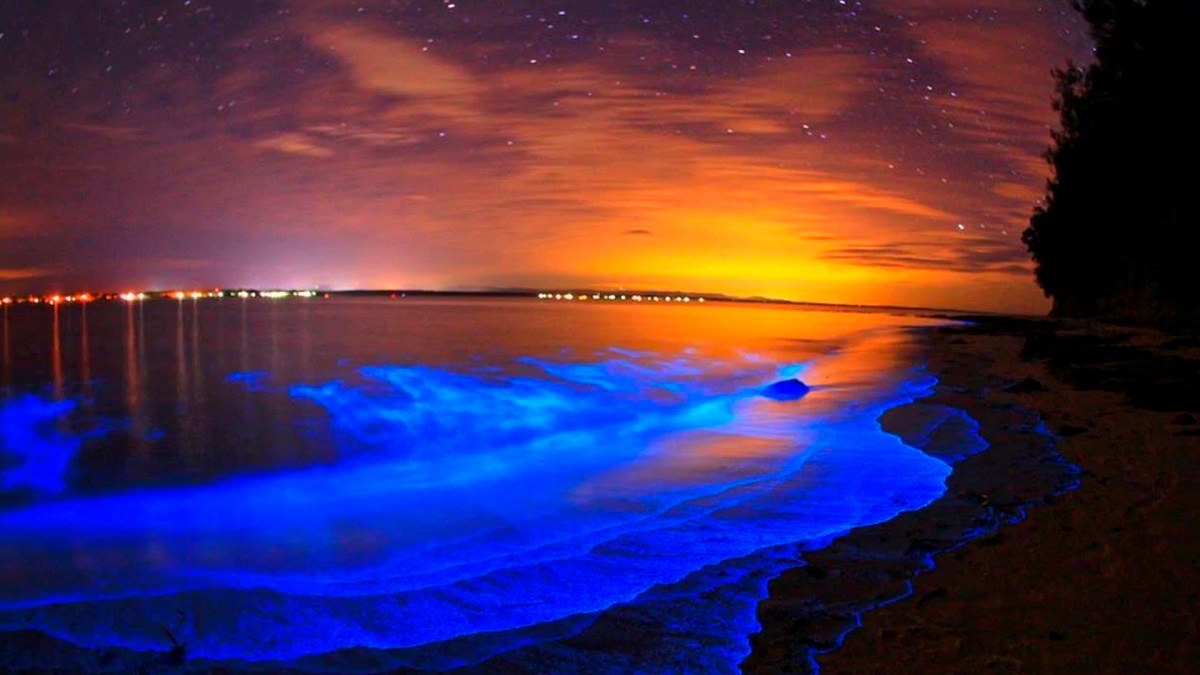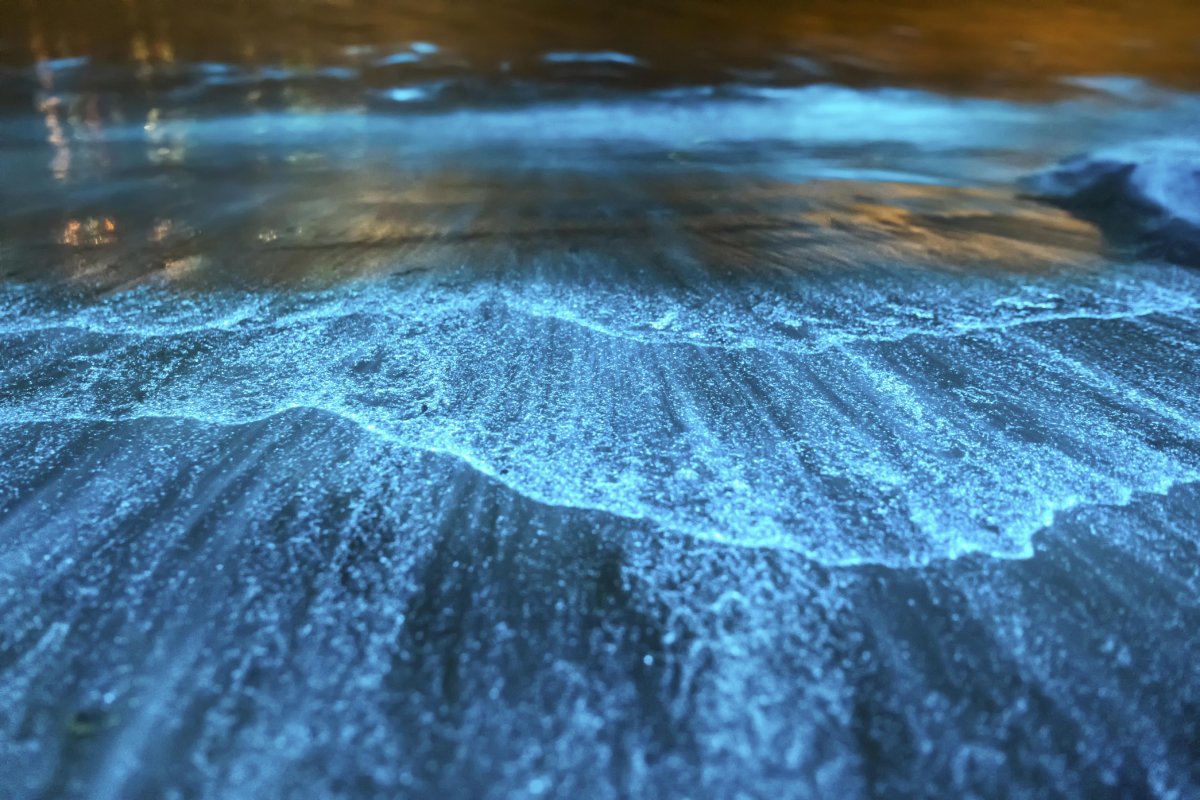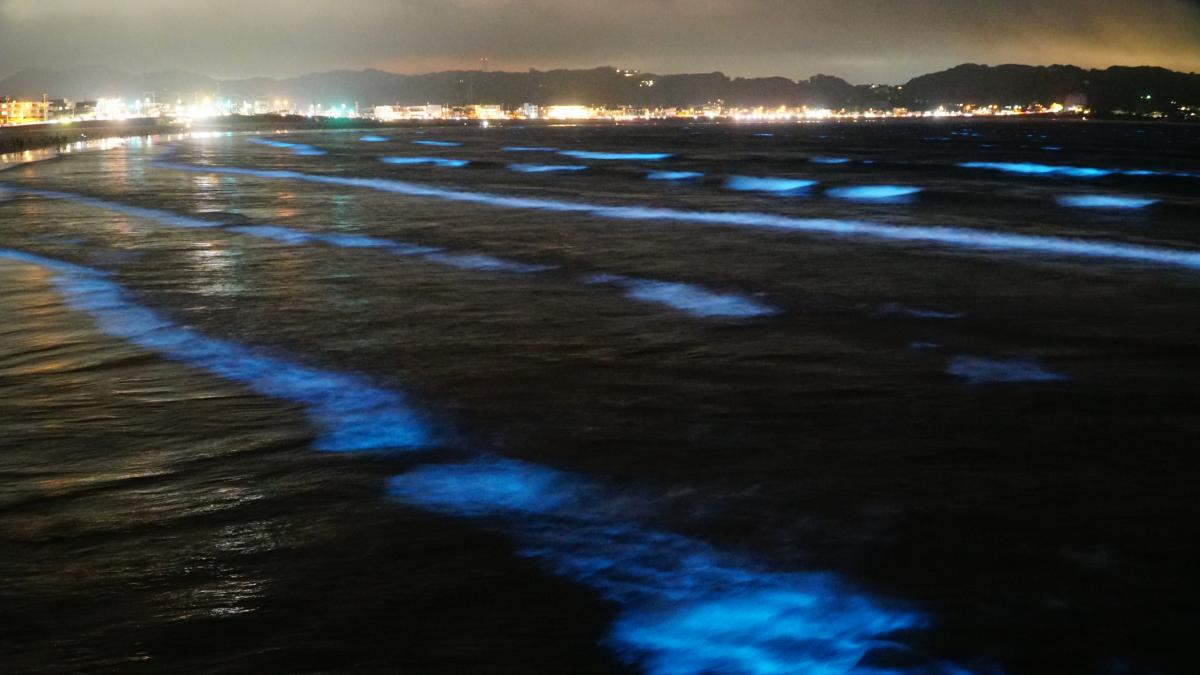
The natural occurrence of bioluminescence, commonly known as burning sea, occurs when certain organisms produce a chemical reaction that results in the emission of light. This captivating phenomenon can be observed on various beaches around the world, including those in Spain.
Therefore, in this article we are going to tell you which are the best bioluminescent beaches of Spain.
What is bioluminescence

Bioluminescence is a phenomenon present in certain living organisms, which allows them to produce visible light through chemical reactions in their cells. This process occurs mainly in various marine organisms, such as jellyfish, fish, squid and some species of plankton.
It is based on the interaction of a protein called luciferase, which acts on an organic molecule called luciferase and oxygen. When these substances combine in the presence of a cofactor enzyme, a chemical reaction occurs that releases energy in the form of visible light.
This ability to emit light can have different purposes for the organisms that possess it. For example, some use it as a defense mechanism, producing flashes of light that distract predators or confuse them. Others use it to attract prey or mates during reproduction, creating specific light signals.
In addition to its importance in nature, Bioluminescence also has applications in various scientific and technological fields. It is used in molecular biology to study cellular processes, in medicine to detect diseases, and in biotechnology to develop diagnostic tools and advanced therapies.
Bioluminescent beaches

All the bioluminescent beaches They are an amazing natural phenomenon that occurs in certain regions of the world, where water lights up with a bright blue glow when agitated or disturbed. This effect is caused by the presence of bioluminescent microorganisms, such as dinoflagellates and luminescent bacteria, in the water.
When bioluminescent microorganisms They are disturbed by the movement of water, whether by waves, currents or even by the friction of an object, activate their ability to produce light. This process is triggered due to biochemical reactions within the cells of these microorganisms, similar to those that occur in other bioluminescent organisms.
In the case of bioluminescent beaches, the concentration of bioluminescent microorganisms in the water may be high enough for agitation to cause a noticeable visual effect. When the waves break on the shore, the water fills with these organisms and emits flashes of bright blue light, creating an impressive and magical spectacle.
This phenomenon can be observed in various places around the world, such as Mosquito Bay in Puerto Rico, Laguna Grande in Vieques, Hanalei Bay in Hawaii, among others. The bioluminescent beaches attract numerous visitors each year, who are amazed by the unique beauty of this natural spectacle.
The best bioluminescent beaches in Spain

Known as the burning sea, this event gives a luminous blue or green hue to the shores, evoking a sensation similar to a celestial night sky. Recognized in destinations such as Puerto Rico, Costa Rica, Mexico and Japan, it is not necessary to venture far to participate in this spectacle. In our country, the Galician beaches serve as a setting for this phenomenon.
Let's see which are the best bioluminescent beaches in Spain:
Cíes and Ons Islands (Galicia)
Located in the Vigo estuary, The Cíes Islands form an archipelago that can only be reached by sea. During the summer and Easter seasons, multiple shipping companies operate from the port of Vigo that offer daily boat departures to the Cíes Islands. These ferries provide direct transportation to the islands of Monte Agudo and O Faro.
Cape Fisterra and Corcubión (Galicia)
Located in Galicia, Cape Fisterra is a rocky granite peninsula that extends to the Costa da Morte region.
Carnota Beach (Galicia)
Located in A Coruña, Carnota Beach holds the distinction of being the longest beach in the entire region of Galicia.
Muxia beaches
The beautiful beaches of Muxía are a sight to behold. With their pristine coastlines and crystal clear waters, they offer the perfect escape for beach lovers. Whether you prefer to lounge in the sun, give yourself a refreshing swim or simply strolling along the coast, the beaches of Muxía have something for all tastes. The tranquil atmosphere and stunning views make it an ideal destination to relax and rejuvenate. So prepare your sunscreen and towel and get ready to experience the natural beauty of Muxía's beaches.
Located in the province of A Coruña, Muxía is a picturesque Spanish municipality that is part of the Finisterre region, located along the Costa da Morte. Within this municipality, there are a total of 16 stunning beaches, providing ample opportunities to witness and appreciate this natural wonder.
Seiruga Beach (Malpica)
A great option for beach lovers is Seiruga Beach, situated in a pristine natural environment with the picturesque backdrop of the Sisargas Islands. This idyllic place is known for its unique phenomenon. Another excellent option is Os Riás Beach, located in Maplica.
Balarés Beach (Ponteceso)
Located at one end of Monte Blanco, Balarés beach stands out as a coastal jewel of impressive beauty on the Costa da Morte, nestled between the Corme and Laxe estuaries.
Rebordelo Beach (Cabana de Bergantiños)
The extensive beach of Rebordelo, located in a virgin environment along the coast of Cabana, It stands as the largest beach in the municipality. Surrounded by lush pine and eucalyptus forests, it offers a truly idyllic environment.
O Ézaro Beach (Dumbría)
On the other hand, the only beach in the municipality of Dumbría is the renowned Ézaro Beach. Located in the Ézaro cove, it has the presence of the Xallas River and has a blue flag and pristine white sand.
I hope that with this information you can learn more about what bioluminescence is and which are the best bioluminescent beaches in Spain.